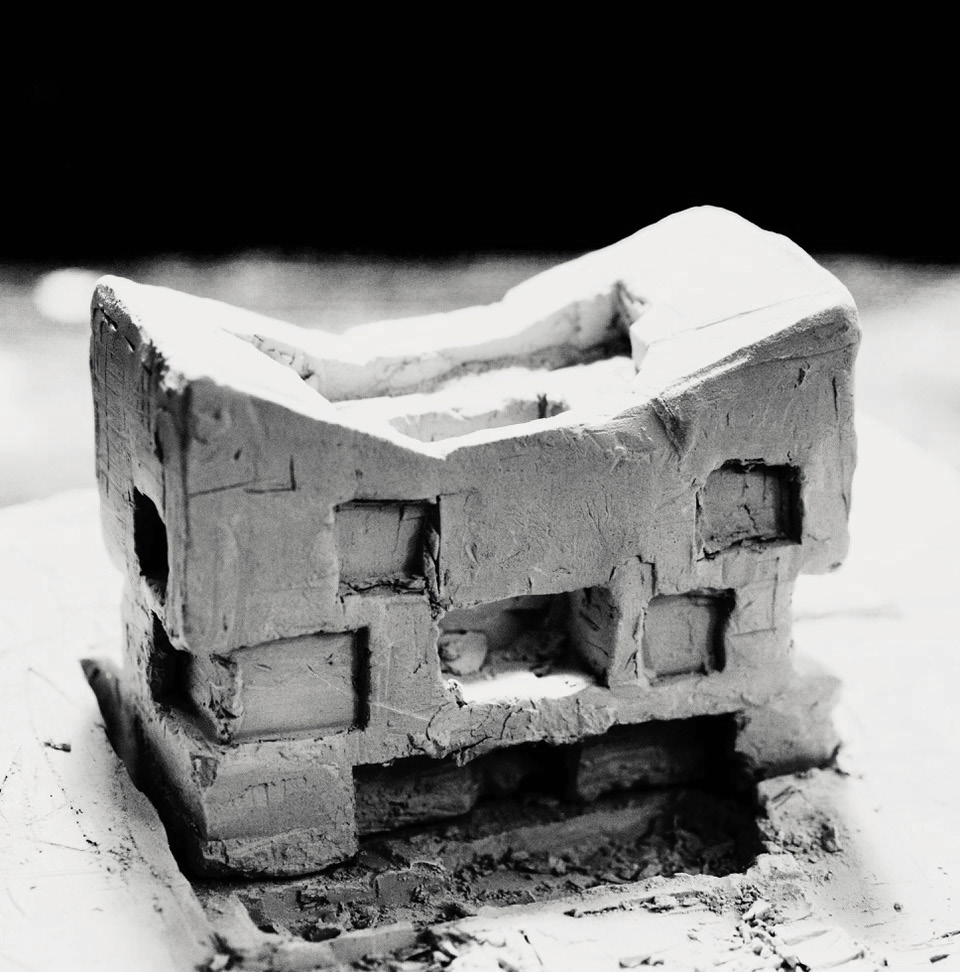
Located in the Changshan Township, near Jinhua City, Zhejiang Province, the project is situated on a slope and touches the lake. The proposed architecture is a strong shape that anchors the habitant and the visitor to the shore of the Lake. It is reminiscent of a local, archaic and timeless architecture. Our ecological concept is the Haimian House, or the Sponge House, a transposition of the Sponge City concept to the microcosmic scale of a singular house. The house absorbs, filters and releases the nutrients of the environment: water, sun, and wind. It auto-regulates its own temperature, heats and cools naturally, with only renewable energies.
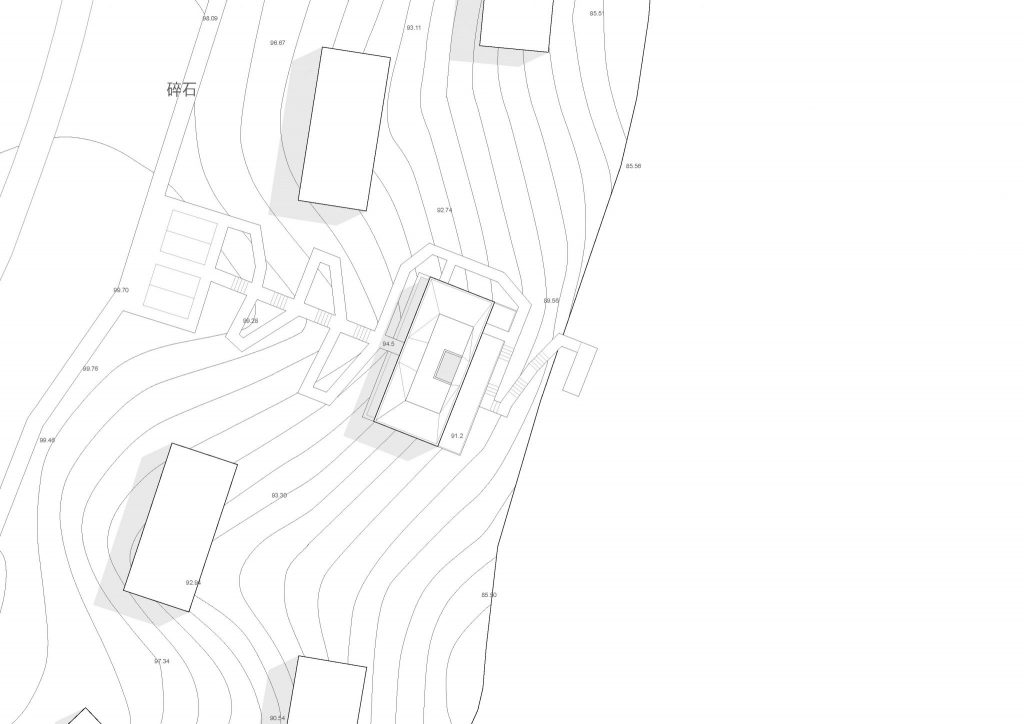
Using the traditional inverted courtyard roof typology as a starting point, the roof is modelled to fit the topography and react to wind, sun and water conditions. The roof geometry is oriented around the inner courtyard. The roof shape is a multi- fold and allows for air circulation, water collection in a reservoir, light control and the articulation of spatial conditions inside. Rain water from the roof flows into delightful water basins, filtered naturally, and used for the irrigation of plants and for toilets. The reference to local traditional courtyard typologies continues the formal heritage and gives the building a cultural identity.
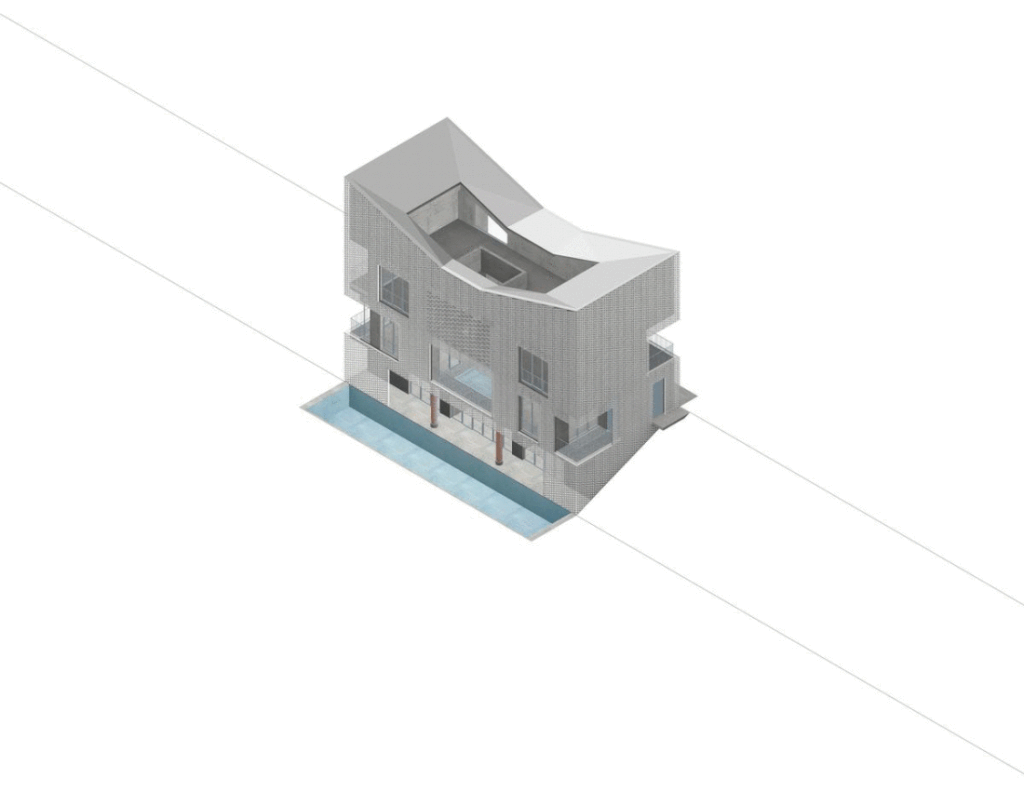
The water flows in the Sponge House, naturally warming and cooling the house by redistributing heat as it circulates in tubes embedded in the concrete slabs. A low temperature, reversible heat pump extracts heat from the outside air, powered by solar panels (photovoltaic tiles) in the roof, and heats the house comfortably and ecologically in the winter. For cooling in the summer, the system is reversed, and heat is extracted from the indoor air. Excess energy from the sun is stored in 108kWh batteries housed under the roof. The thermal inertia maintains the internal temperature comfortably and healthily, and reduces the generation of dust, normally caused by air confection heating.
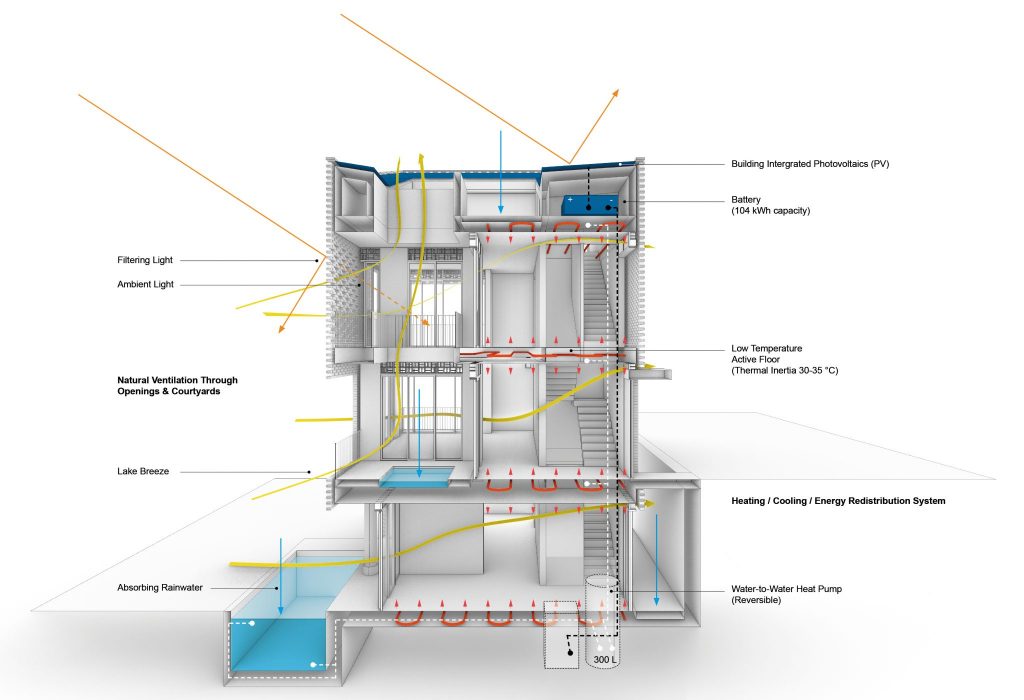
The choreography of the micro-climatic zones is at the heart of our design concept. The proposed architecture is organized into three distinct layers – a brick skin, an inner structure, and intimate zones. The superposition of these layers creates different atmospheres and micro-climates. To protect from weather and storms, the house is wrapped around in an outer shell made of reclaimed bricks from the region. The bricks vary in porosity and allows for light to filter in. The brick shell provides a first layer of protection and insulation. The second layer, made of concrete and glass, is the structural layer. The massive concrete structure, acting autonomously and independently on each floor, supports not only the floor slabs and the floors above, but also secures the brick layer against shearing forces. The warmest layer is the intimate zone. This is the most intimate layer and provides an extra layer of insulation. It is closest to the body. The intimate zone contains the wet zones, including the bath rooms, the sauna, the kitchen, the rest rooms and showers. The intimate zone emanates heat to the surrounding areas.
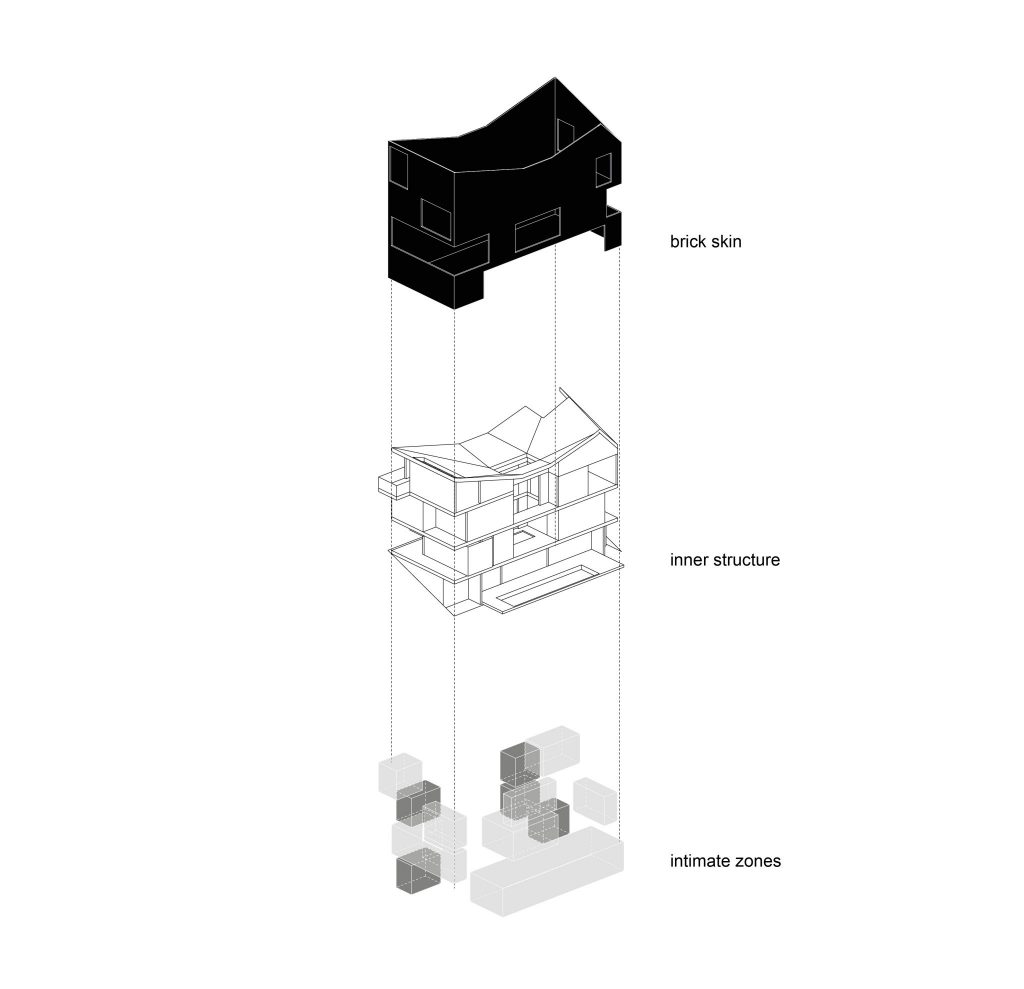
The organization and layout of the spaces follow the logic of “sponge” architecture, combining closed and semi-closed spaces. This combination is ideal for humid-subtropical climates. The open and semi open spaces, made of courtyards, loggias, patios, not only facilitate natural ventilation and cooling, but also establish an intimate relation between the inside and outside, between human and nature, between producing and consuming.
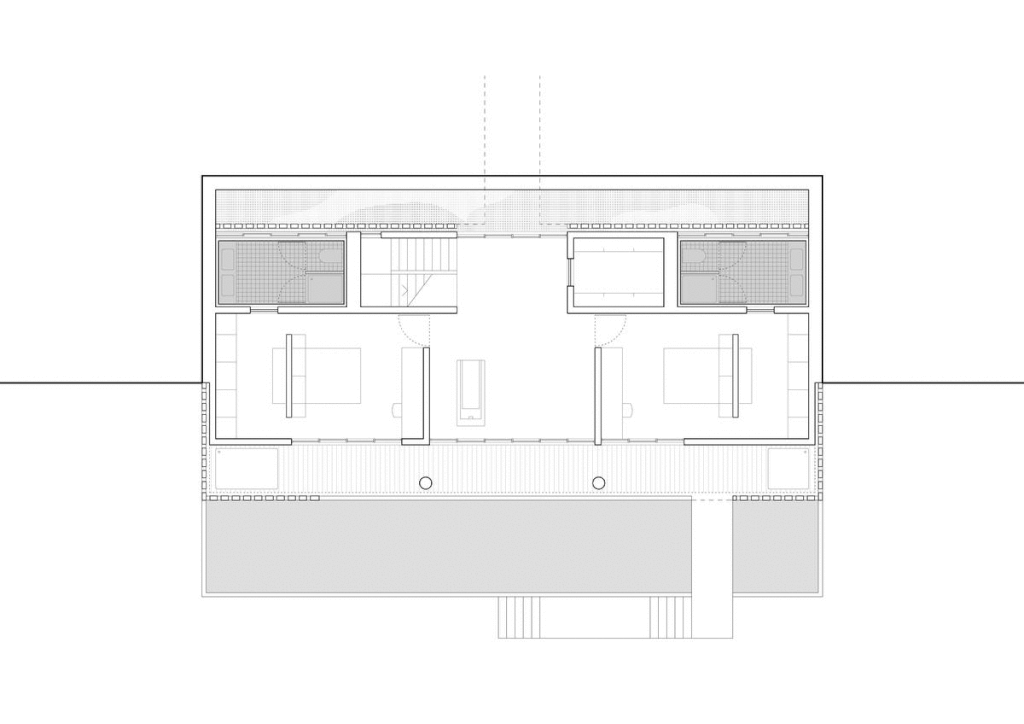
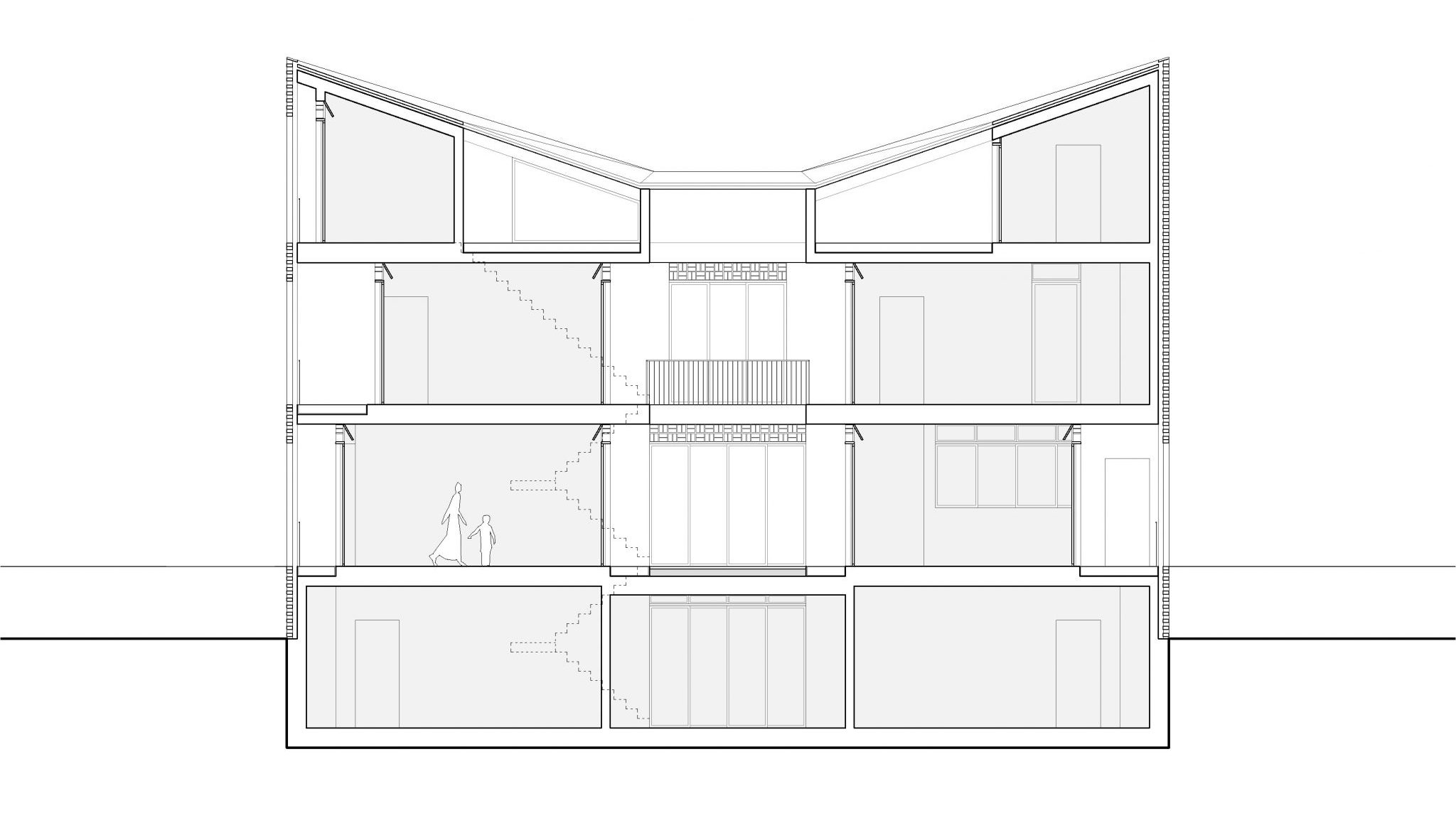
The project mixes inside and outside, nature and architecture. Nature is domesticated: a courtyard for reading under a tree, an herbal garden for the kitchen, a gravel loggia adjacent to the bathroom, a wooden loggia for the bedroom; each creating unique rooms with framed views of the lake and the surrounding landscape. Architectural interfaces regulate the thresholds (such as screens, windows, louvers, doors) and can be used by the habitants to adjust air flows, perfume the air with natural scents, absorb noise, and fine-tune temperatures, humidity levels, and create desired atmospheres.
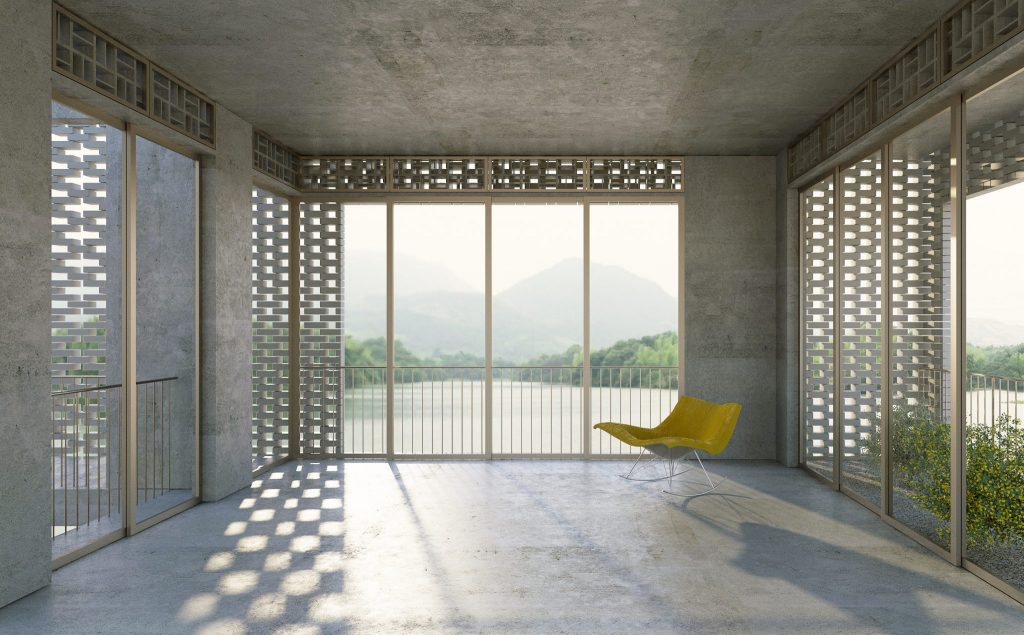
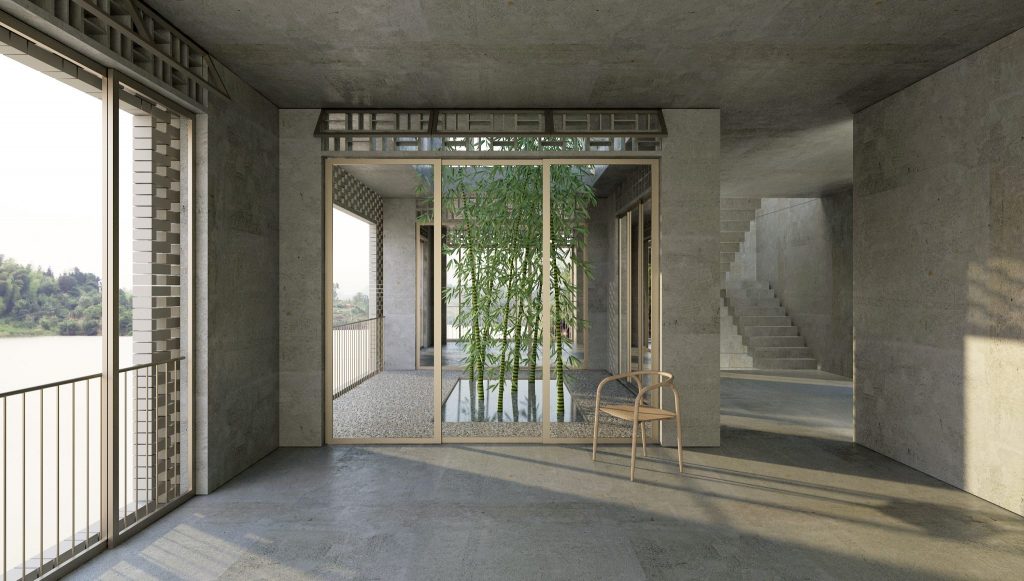
The use of local bricks and reclaimed columns is an important ingredient of our project. The color of the bricks reflects the brick making tradition in the neighborhood. The two round columns in the lower floor are a pair of reclaimed pillars, salvaged from an ancient temple or mansion in the region. The pair of columns, made of solid wood and posed on stone socles, not only provides structural support as a fundamental element of the house, but also symbolically grounds the house, and its nascent history, to the long line of magnificent, architectural ancestors in the region.
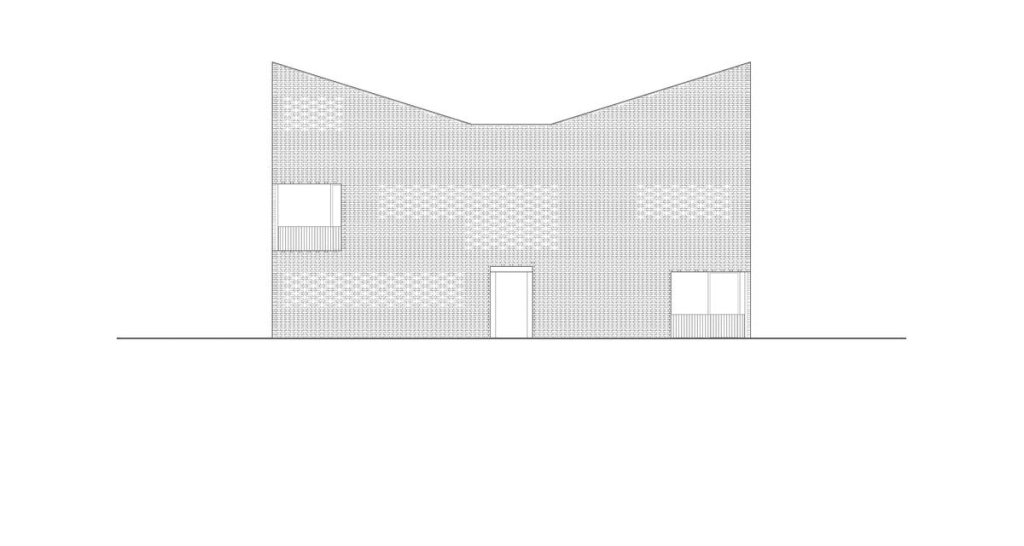
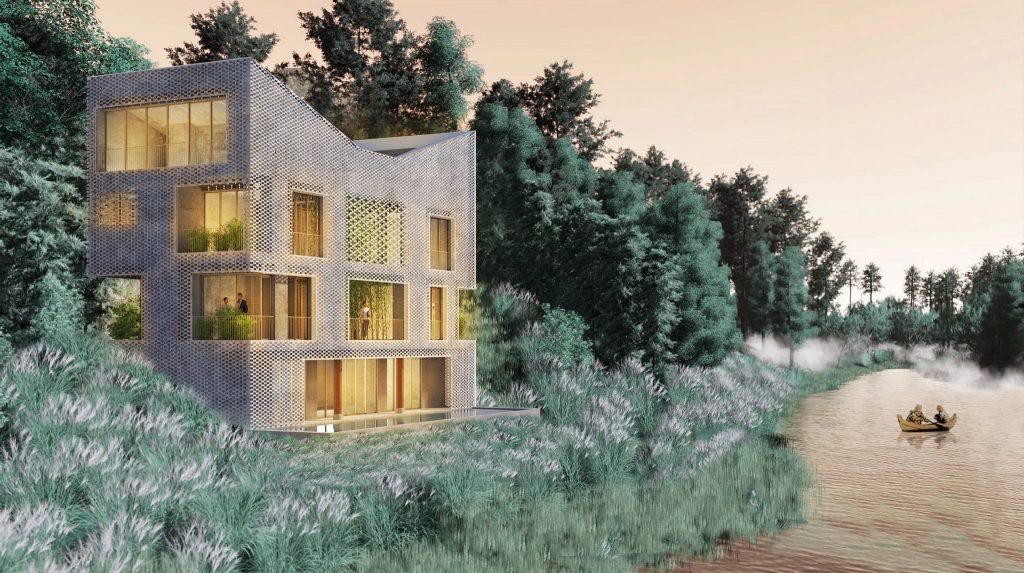
Collaboration with Convergeo
Design team: Muriel Waldvogel, Jeffrey Huang, Frederick Kim, Sergi Aguacil Moreno
Image credits: Convergeo, MxD